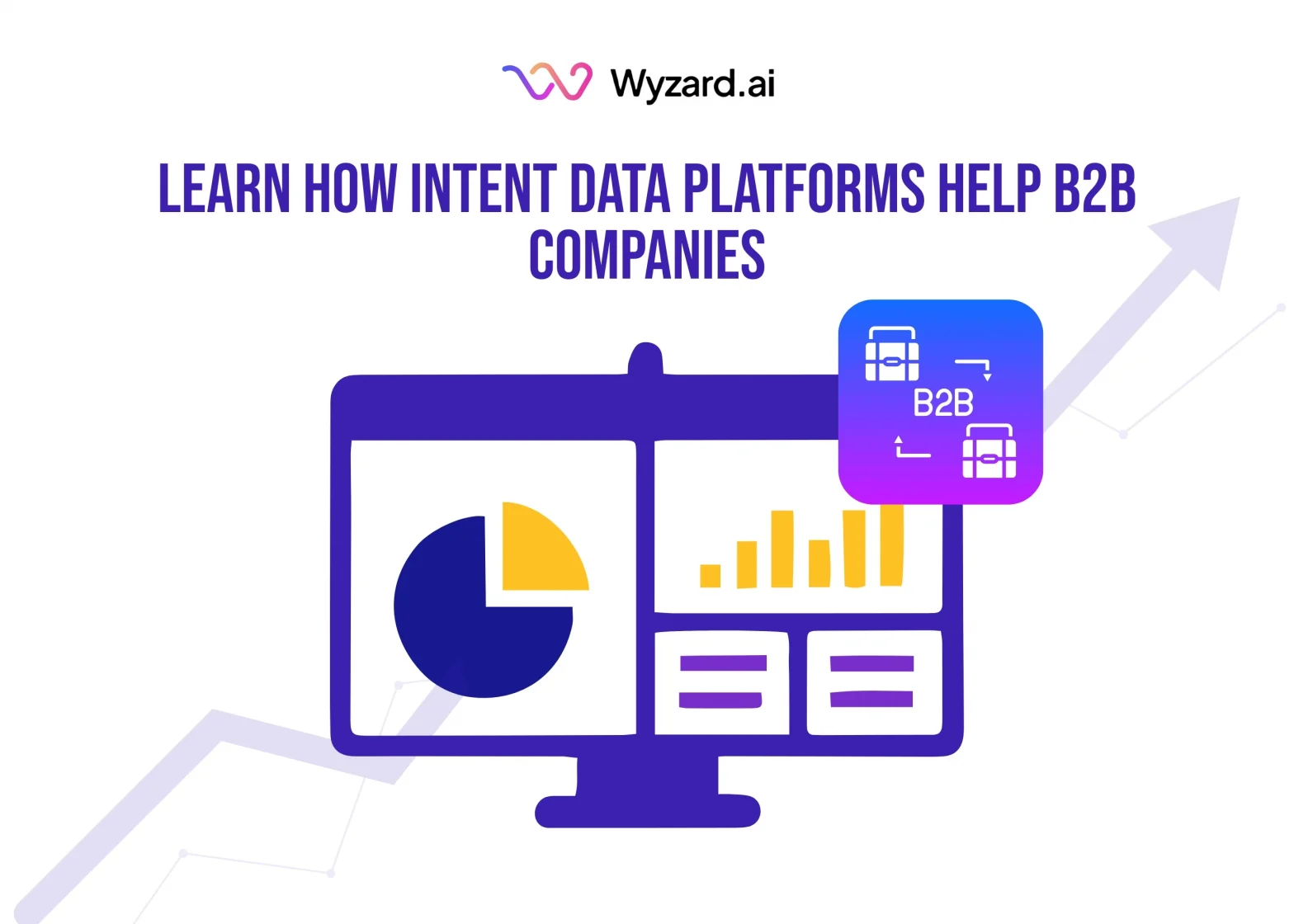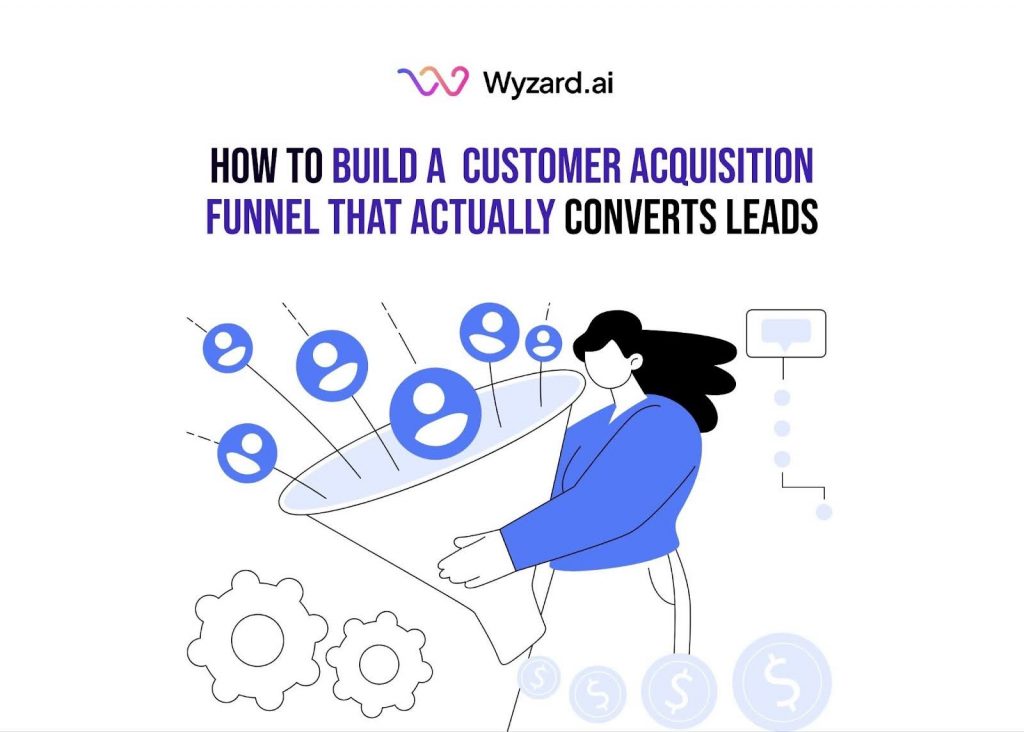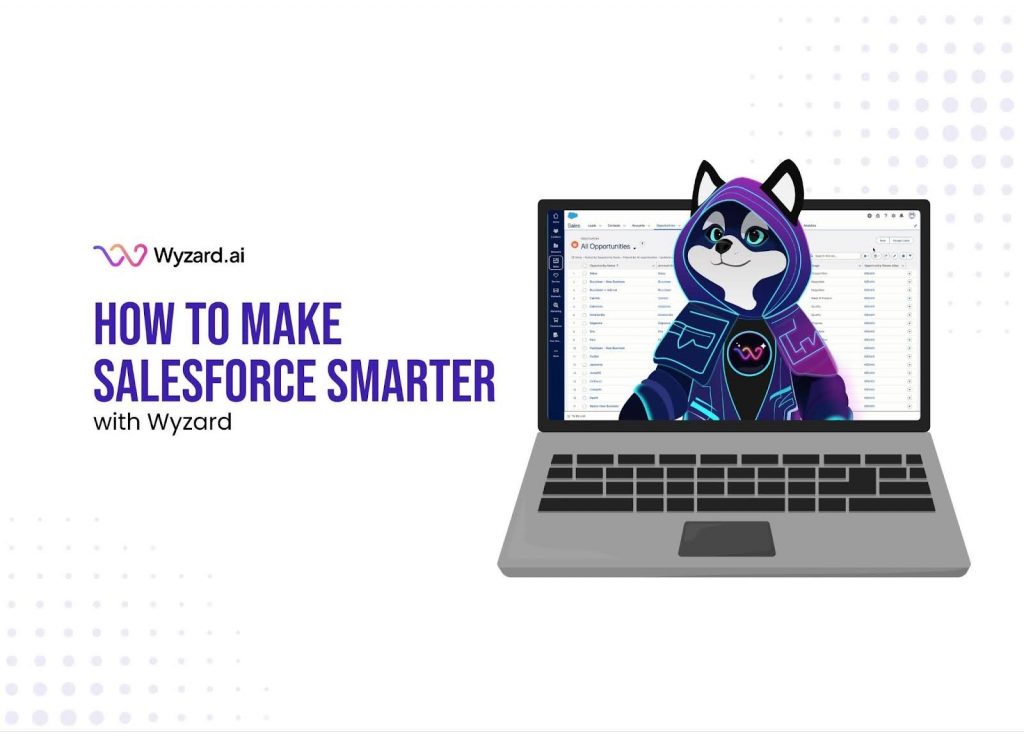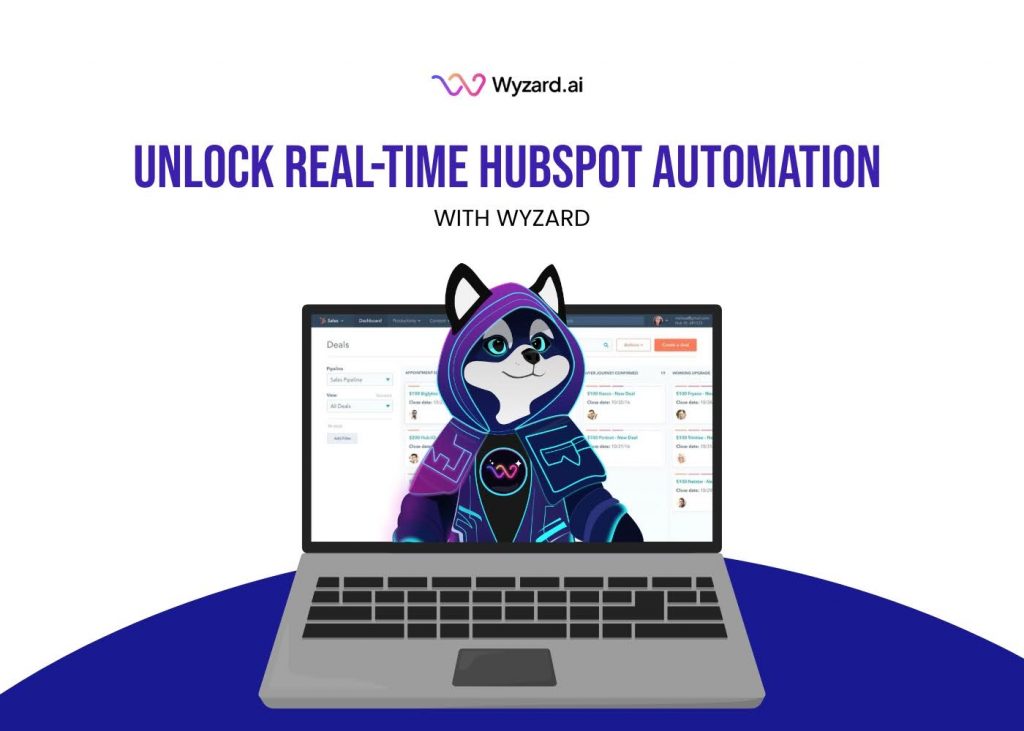You're generating traffic. Leads are visiting your website. But conversions? They're barely moving the needle. The problem isn't your ...

Subscribe Now
In B2B marketing, a common frustration surfaces: your team generates traffic and collects contact information, but somehow, deals still slip through. The disconnect often happens because companies lack visibility into which accounts are actually ready to buy.
Intent data platforms solve this by revealing which prospects are actively researching solutions like yours. Rather than chasing cold leads, you can focus on accounts showing genuine buying signals. This shift transforms how marketing and sales teams prioritize their efforts and allocate resources.
What Is Intent Data and Why It Matters for B2B Companies
Intent data captures digital signals that indicate a prospect’s interest in specific products or solutions. These signals include search queries, content consumption patterns, website visits, and engagement across multiple channels.
For B2B companies, this information becomes particularly valuable because business buying cycles involve multiple decision-makers and extended research phases. When someone from a target account downloads a white paper about marketing automation or visits competitor pricing pages, that’s a signal worth acting on.
The challenge many companies face is that buyer research happens quietly. Prospects evaluate options long before reaching out to sales. Without visibility into this research activity, teams miss opportunities to engage when interest peaks. Intent data brings these hidden signals to the surface, allowing you to meet prospects where they are in their journey.
Wyzard.ai positions itself as “The Signal-to-Revenue AI” precisely because it addresses this problem. When buyer signals scatter across tools and channels, opportunities get lost. Wyzard.ai connects these signals and orchestrates immediate GTM actions, ensuring every buying moment converts into a revenue opportunity.
Types of Intent Data: First-Party, Second-Party, and Third-Party
Understanding different intent data sources helps companies build a comprehensive view of prospect behavior.
First-party intent data comes directly from your owned channels, your website, emails, CRM, and product interactions. This data proves most reliable because you control its collection and know exactly how prospects engage with your brand. Examples include pages viewed, content downloaded, email opens, and trial activity.
Second-party intent data represents another organization’s first-party data shared through partnerships. This might include engagement on review sites like G2, interactions with sponsored content on industry publications, or shared audience insights from strategic partners. The data quality remains high because it comes from direct user interactions, just not on your properties.
Third-party intent data aggregates signals from across the web, searches, content consumption on multiple sites, forum activity, and event participation. Providers collect this data from thousands of publishers and use it to identify companies researching specific topics. While less precise than first-party data, it reveals prospect interest before they ever visit your website.
Most effective strategies combine all three types. First-party data tells you who’s already engaged with your brand. Second-party and third-party data identify prospects in early research stages, allowing you to reach them before competitors do.
| Data Type | Source | Accuracy | Use Case |
| First-Party | Your website, CRM, and emails | Highest | Qualify existing leads, personalize outreach |
| Second-Party | Partner sites, review platforms | High | Identify prospects by comparing solutions |
| Third-Party | External publishers, aggregators | Moderate | Discover accounts in early research |
How Intent Data Platforms Capture and Process Buying Signals
Intent data platforms use several technical approaches to identify and score buying signals.
The process starts with data collection. Platforms track website visits, content downloads, search patterns, and engagement across their network of publisher sites. They monitor which topics prospects research, how frequently they return, and what specific content they consume.
Next comes data processing and enrichment. Raw behavioral data gets matched to company and contact records. Machine learning algorithms analyze patterns to distinguish genuine interest from casual browsing. Natural language processing interprets content consumption to understand what solutions prospects seek.
Scoring models then rank accounts based on signal strength. Platforms consider factors like research frequency, topic relevance, content depth consumed, and whether engagement is increasing or decreasing. High scores indicate accounts actively evaluating solutions.
Finally, platforms deliver these insights through integrations with CRM systems, marketing automation tools, and advertising platforms. Real-time alerts notify teams when key accounts show buying signals, while automated workflows trigger personalized outreach.
Wyzard.ai’s approach emphasizes connecting scattered signals across your entire tech stack. Instead of just collecting data, it orchestrates actions, triggering emails, alerting sales reps, personalizing website content, and adjusting ad targeting, all based on live buying signals.
Key Benefits of Using Intent Data for B2B Sales and Marketing
Companies that implement intent data platforms report several measurable improvements.
Sharper lead prioritization emerges as the most immediate benefit. Sales teams stop wasting time on prospects who aren’t ready and focus on accounts showing clear buying signals.
Faster sales cycles result from engaging prospects when interest peaks. Instead of nurturing leads for months, teams reach out as prospects actively research, compressing the timeline from first contact to close.
Higher conversion rates follow naturally. When outreach aligns with genuine prospect needs at the right moment, response rates improve.
More efficient marketing spend comes from precise targeting. Rather than broad campaigns hoping to find interested prospects, marketing focuses its budget on accounts already researching relevant topics.
Better sales and marketing alignment develops because both teams work from the same account intelligence. Disagreements about lead quality decrease when objective behavioral data guide prioritization.
Earlier intervention for customer retention becomes possible by monitoring existing customer accounts. Sudden drops in engagement or research on competitor topics signal potential churn risks before renewal conversations happen.
Using Intent Data to Identify and Qualify High-Value Prospects
Putting intent data to work requires a systematic approach to prospect identification and qualification.
Start by defining your ideal customer profile and the specific topics that indicate buying interest for your solution. A marketing automation vendor might track interest in “email campaign management,” “lead scoring,” or “marketing analytics.” Be specific; broad topics generate too much noise.
Set up monitoring for accounts matching your ideal customer profile that show engagement with these topics. Most platforms allow you to create custom audiences based on firmographic criteria (company size, industry, location) combined with behavioral signals.
Establish scoring thresholds to distinguish different levels of interest. Accounts might fall into categories like:
High intent: Multiple touchpoints over short timeframes, deep content consumption, increasing engagement trajectory
Medium intent: Consistent but lighter engagement, relevant topic interest, but less focused
Low intent: Sporadic engagement, early research stage, broad topic exploration
Create alert systems that notify sales when high-intent accounts cross specific thresholds. These triggers should prompt immediate action, personalized outreach, targeted advertising, or account-based campaigns.
For medium-intent accounts, implement nurture workflows that provide helpful content aligned with their research topics. The goal is to stay visible as they progress through their evaluation.
Track how qualified prospects from intent data perform compared to other sources. Measure conversion rates, deal sizes, and sales cycle length to refine your scoring models and qualification criteria.
Wyzard.ai automates much of this workflow by continuously monitoring signals across channels and triggering appropriate actions without manual intervention. When an account shows buying signals, the platform can instantly notify sales, personalize website content, and launch targeted email sequences, ensuring no opportunity slips through the cracks.
Integrating Intent Data with Your Existing Sales and Marketing Stack
Intent data delivers maximum value when it flows seamlessly into your existing tools and workflows.
Most companies use a combination of CRM systems (Salesforce, HubSpot, Microsoft Dynamics), marketing automation platforms (Marketo, Pardot, Eloqua), and sales engagement tools (Outreach, Salesloft). Your intent data platform should integrate with all of them.
CRM integration ensures that intent signals appear directly in account and contact records where sales teams already work. Representatives can see which accounts are researching, what topics interest them, and how engagement trends over time, all without leaving their primary workspace.
Marketing automation integration allows you to build segments based on intent data and create targeted campaigns. You might build a nurture track for accounts researching competitor alternatives or trigger personalized email sequences when intent spikes.
Sales engagement platform integration enables representatives to prioritize outreach based on real-time signals. When an account shows high intent, it can automatically surface in daily call lists or prompt sequence enrollment.
Advertising platform integration takes intent data beyond owned channels. You can create custom audiences for LinkedIn, Google, or display advertising that target accounts showing specific research behaviors.
Set up data flows carefully to avoid overwhelming teams with information. Focus on actionable insights rather than raw data dumps. Sales representatives should see “Account XYZ is researching marketing automation pricing” rather than lists of page views and content downloads.
Building Intent-Based Campaigns That Convert
Intent data becomes most powerful when it shapes your entire campaign strategy, not just lead scoring.
Content personalization starts by matching your content library to common intent topics. Create dedicated landing pages, email sequences, and assets for each major research theme. When prospects show interest in “sales pipeline visibility,” serve them content about forecasting and reporting rather than generic product overviews.
Account-based campaigns work exceptionally well with intent data. Identify clusters of high-intent accounts in specific industries or with common characteristics, then build coordinated campaigns across email, ads, and direct outreach tailored to their specific needs.
Timing optimization matters enormously. Intent data reveals not just who is interested but when interest peaks. Launch intensive campaigns when signals surge rather than following arbitrary calendar schedules.
Multi-channel coordination ensures prospects encounter consistent messaging wherever they engage. If an account researches your solution on your website, they should see relevant ads on LinkedIn, receive helpful emails, and get personalized outreach from sales, all reinforcing the same value proposition.
Competitive displacement campaigns target accounts showing interest in competitors. Create content that addresses common objections, highlights your differentiators, and makes switching easy. Intent data tells you exactly which prospects are evaluating alternatives.
Churn prevention campaigns use intent data from existing customers. When a current account suddenly researches competing solutions or their engagement drops, trigger retention campaigns that address concerns and reinforce value.
Measure campaign performance not just by standard metrics (open rates, click rates) but by influence on pipeline and revenue. Track which campaigns move intent-qualified accounts through your funnel and optimize accordingly.
Common Challenges and How to Address Them
Companies implementing intent data platforms encounter several predictable challenges.
Data quality concerns surface when intent signals seem noisy or irrelevant. This often happens because scoring models haven’t been calibrated for your specific business. Address this by starting with narrow topic definitions, setting higher score thresholds initially, and refining based on which signals correlate with actual conversions.
Integration complexity can slow implementation, especially in organizations with custom-built systems or legacy tools. Work with your platform provider’s technical team to map out data flows before launch. Start with core integrations (CRM and marketing automation) before adding others.
Team adoption resistance occurs when sales representatives question data accuracy or don’t understand how to use intent insights. Combat this through training that connects intent signals to successful outcomes. Show representatives specific examples where intent data identified opportunities they wouldn’t have found otherwise.
Privacy and compliance concerns require attention, given regulations like GDPR and CCPA. Ensure your intent data provider sources information ethically, respects consent requirements, and offers transparency about collection methods. Avoid providers who can’t clearly explain their data sourcing.
Action overload happens when teams try to respond to every signal. Not all intent signals warrant immediate action. Establish clear criteria for what triggers manual outreach versus automated nurture versus passive monitoring.
Choosing the Right Intent Data Platform for Your Business
Selecting an intent data platform requires evaluating several factors against your specific needs.
Data sources and coverage matter because different providers access different signal networks. Some focus on third-party publisher data, others emphasize first-party website identification, and some combine multiple sources. Choose a platform whose data sources align with where your prospects research.
Signal accuracy and freshness separate good platforms from mediocre ones. Ask providers about their data update frequency, how they filter out noise, and what percentage of flagged accounts actually enter evaluation processes. Request case studies with conversion metrics.
Integration capabilities determine how easily intent data flows into your existing workflows. Verify that platforms offer native integrations with your CRM, marketing automation, and sales tools rather than requiring custom development.
Scoring and segmentation flexibility allow you to tailor the platform to your business. Look for customizable scoring models, the ability to define your own topics, and segmentation options that match your ideal customer profile.
Privacy compliance and data sourcing transparency protect your company from regulatory risks. Ensure providers clearly explain how they collect data, respect consent requirements, and maintain GDPR/CCPA compliance.
Pricing structure and scalability affect long-term viability. Understand whether platforms charge per account, per user, per signal, or use subscription models. Consider how costs scale as your program grows.
Support and onboarding quality influence implementation success. Evaluate whether providers offer strategic guidance beyond technical setup, help with scoring model development, campaign strategy, and ongoing optimization.
Wyzard.ai distinguishes itself through its focus on action orchestration rather than just data delivery. While many platforms stop at showing you intent signals, Wyzard.ai connects tools, captures signals live, and triggers automated but human-supervised follow-ups across your entire GTM stack. This approach ensures that scattered signals scattered across channels convert into coordinated revenue opportunities.
FAQs
Lead scoring evaluates prospects based on demographic fit and basic engagement metrics (email opens, page views). Intent data captures specific research behaviors indicating active buying interest. Lead scoring answers “could this be a good customer?” while intent data answers “is this company actively looking for a solution now?”
Accuracy varies by provider and use case, but intent-qualified leads typically convert 20-40% better than leads from other sources. The key is proper implementation—setting appropriate score thresholds, focusing on relevant topics, and combining intent signals with other qualification criteria rather than relying solely on behavioral data.
Small and mid-market companies often see faster ROI from intent data because they have more concentrated target markets and can act quickly on signals. Many platforms now offer accessible pricing for growing companies. The key is starting with focused use cases rather than trying to implement across your entire operation at once.
Traditional platforms show you which accounts are researching, but leave the action to you. Wyzard.ai goes further by orchestrating immediate responses across your entire GTM stack. When buying signals appear, Wyzard.ai connects tools, captures signals live, and triggers coordinated follow-ups automatically, ensuring scattered signals convert into revenue opportunities without manual effort.
Other blogs
The latest industry news, interviews, technologies, and resources.
How to Make Salesforce Smarter with Wyzard.ai
Your CRM is packed with contacts, but how many buying signals are you missing right now? A prospect just ...

Unlock Real-Time HubSpot Automation with Wyzard.ai
Your HubSpot portal holds valuable data about every lead, deal, and customer interaction. But if you're waiting hours, or ...

 We’ve secured funding to power Signal-to-Revenue AI to GTM teams globally. →
We’ve secured funding to power Signal-to-Revenue AI to GTM teams globally. →


